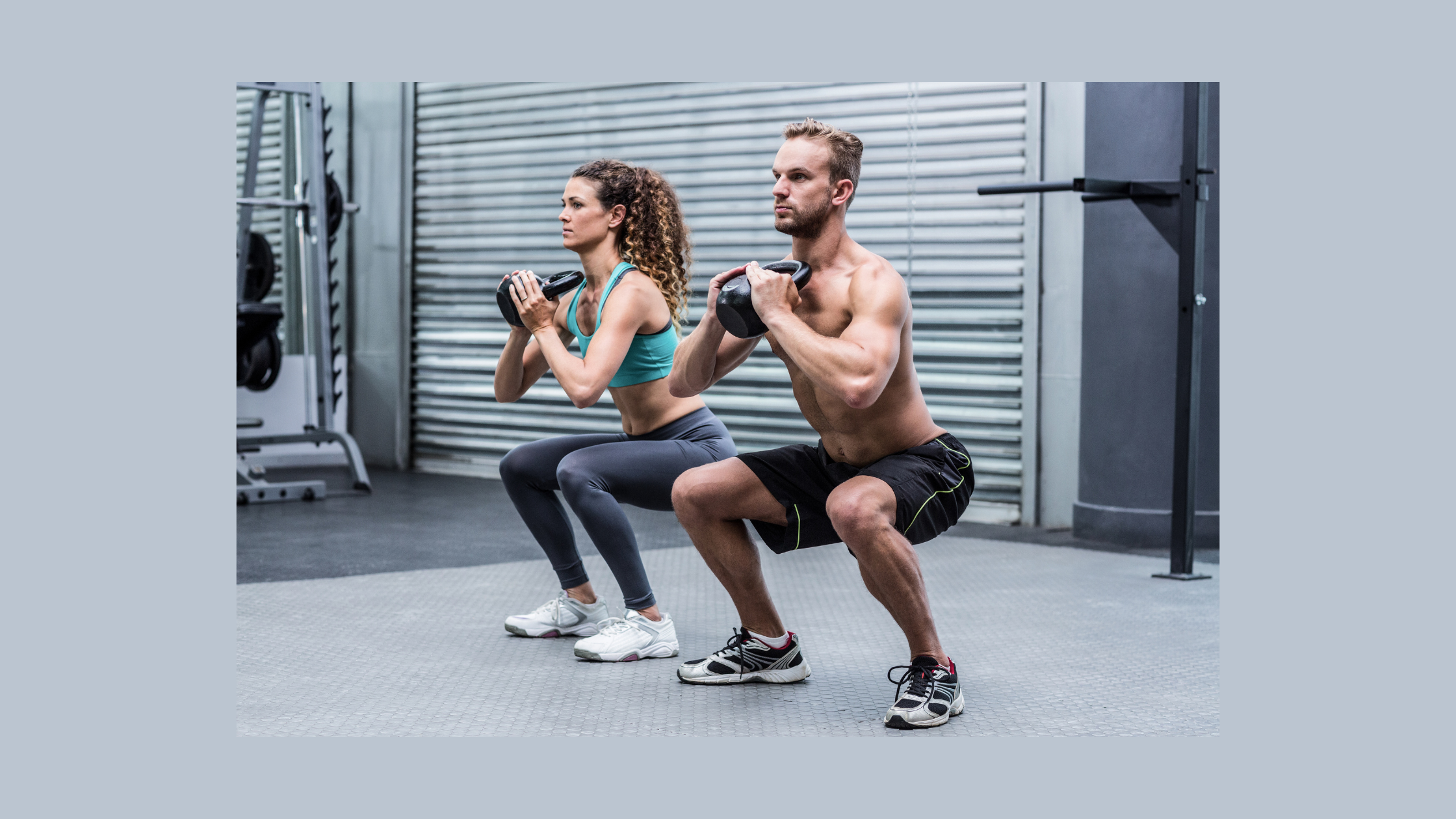Table of Contents
In today’s fast-paced world, fitness is often viewed as a way to lose weight, tone muscles, or build strength. While these are all worthy goals, the true purpose of fitness should go beyond aesthetics or raw strength—it should help us improve our everyday movements and quality of life. This is where functional fitness comes in. Functional training focuses on movements that mirror real-life activities and improve mobility, balance, and strength in ways that enhance daily living.
In this comprehensive guide, we will dive deep into functional fitness and explore exercises designed to improve everyday movements. We’ll look at how functional training exercises can enhance your ability to perform daily tasks, how they contribute to overall functional strength, and why they are vital for long-term health.
What is Functional Fitness?
Functional fitness involves exercises that train your muscles to work together and prepare them for daily tasks by simulating common movements. These exercises emphasize the use of multiple muscle groups at the same time, which helps improve coordination, balance, and endurance. Functional training aims to build strength in a way that enhances your ability to perform daily activities, such as lifting, bending, walking, and reaching.
Traditional strength training focuses on isolating muscle groups, but functional training involves compound movements that mimic the actions you perform throughout the day. Think of it as training for life—helping you move better, avoid injury, and improve your quality of living.
The Importance of Functional Strength Training
Functional strength training is critical because it focuses on movement patterns rather than isolating muscles. By engaging multiple muscle groups at once, you enhance the body’s ability to perform everyday movements more efficiently and reduce the risk of injury.
As we age, our movement patterns change, often leading to stiffness, imbalances, or even pain in everyday tasks like lifting groceries, climbing stairs, or getting up from a chair. Functional training helps address these issues by enhancing strength, flexibility, and range of motion, allowing you to stay active and independent longer.
Benefits of Functional Strength Training:
- Improves Muscle Coordination: By engaging multiple muscle groups, functional training helps improve how your muscles work together, leading to better overall coordination.
- Increases Mobility and Flexibility: Functional exercises typically involve a wide range of motion, which helps keep joints healthy and increases overall flexibility.
- Enhances Balance and Stability: Many functional exercises require balance, which improves stability and reduces the risk of falls.
- Reduces the Risk of Injury: Functional training strengthens the muscles and stabilizes the joints, reducing the chance of injury during both workouts and daily activities.
- Boosts Everyday Performance: Whether it’s carrying groceries, climbing stairs, or even playing with your kids, functional training helps improve your ability to perform daily tasks more easily.
Principles of Functional Training
To maximize the benefits of functional training, it’s important to follow certain principles that ensure your exercises are aligned with improving daily movements.
- Multi-Planar Movements: Most daily activities require movements in multiple directions (sagittal, frontal, and transverse planes). Functional training incorporates exercises that target movement in all planes of motion.
- Core Engagement: A strong core is essential for almost every movement. Functional exercises engage the core, which stabilizes the spine and improves posture.
- Realistic Movements: Functional training mimics the movements you perform in everyday life. Exercises like squats, lunges, and deadlifts are often used because they closely resemble actions such as bending down to pick something up or climbing stairs.
- Functional Equipment: While bodyweight exercises are central to functional training, incorporating equipment like kettlebells, resistance bands, and medicine balls can add variety and help target different movement patterns.
Top Functional Training Exercises for Everyday Movements
Below are some of the best functional training exercises that mimic everyday activities. Incorporating these exercises into your routine will help you build functional strength and improve your ability to perform day-to-day tasks.
1. Squats
Squats are a fundamental movement in functional training as they mimic actions like sitting and standing. They work the quadriceps, hamstrings, glutes, and core while improving lower body strength.
- How to Perform: Stand with your feet shoulder-width apart. Lower your body as if you’re sitting in a chair, keeping your chest lifted and your weight on your heels. Push through your heels to return to standing.
- Functional Benefit: Improves strength for daily activities like standing up from a chair or picking up objects from the floor.
2. Lunges
Lunges are a great way to work the lower body while also improving balance and coordination. They mimic movements such as walking up stairs or bending down to pick something up.
- How to Perform: Step forward with one leg and lower your hips until both knees are at 90-degree angles. Push back up through the heel of your front leg to return to standing.
- Functional Benefit: Enhances balance and strengthens muscles used for climbing stairs, walking, or bending down.
3. Deadlifts
Deadlifts are one of the most effective exercises for building functional strength in the lower body and back. This movement mirrors picking up heavy objects off the ground, like groceries or luggage.
- How to Perform: Stand with your feet hip-width apart, holding a weight in front of your thighs. Hinge at your hips, keeping your back flat, and lower the weight towards the floor. Engage your glutes and hamstrings to return to standing.
- Functional Benefit: Improves strength for lifting objects from the ground while protecting your lower back.
4. Push-Ups
Push-ups are an excellent bodyweight exercise that strengthens the chest, shoulders, triceps, and core. They mimic pushing movements we perform in everyday life, like pushing a door open.
- How to Perform: Start in a plank position with your hands slightly wider than shoulder-width. Lower your body until your chest nearly touches the floor, then push back up to the starting position.
- Functional Benefit: Builds upper body and core strength for actions like pushing or lifting objects.
5. Kettlebell Swings
Kettlebell swings are a dynamic exercise that engages the entire body, focusing on the hips, glutes, core, and shoulders. This movement simulates lifting or carrying heavy objects.
- How to Perform: Stand with your feet slightly wider than shoulder-width apart, holding a kettlebell with both hands. Hinge at your hips and swing the kettlebell back between your legs, then drive your hips forward to swing it up to chest height.
- Functional Benefit: Builds strength and endurance for movements like carrying groceries or lifting children.
Structuring a Functional Training Workout
A good functional training workout should focus on improving strength, balance, and flexibility across all planes of motion. You can structure your workout by choosing 6-8 exercises that target different movement patterns, such as:
- Squats (Lower body strength)
- Push-ups (Upper body strength)
- Deadlifts (Full-body strength)
- Lunges (Lower body and balance)
- Planks (Core stability)
- Kettlebell swings (Power and endurance)
Perform each exercise for 10-12 repetitions, with 2-3 sets. Make sure to rest for 30-60 seconds between sets to ensure proper recovery. For best results, aim to complete a functional training workout 2-3 times per week.
Progression and Variation in Functional Training
As you become stronger and more proficient in functional training exercises, it’s important to introduce progression and variation to keep challenging your body. You can increase the intensity of your workout by:
- Adding weight to exercises (using dumbbells, kettlebells, or resistance bands).
- Increasing the number of repetitions or sets.
- Performing exercises on an unstable surface (e.g., using a balance board).
- Incorporating plyometric movements, such as jumping squats or lunges.
Variety is key in functional training to avoid plateaus and continuously improve your movement patterns.
Conclusion
Functional fitness is a crucial element of any well-rounded exercise routine. By focusing on movements that improve everyday tasks, functional training helps you build strength, increase flexibility, and enhance balance and coordination. Whether you’re lifting groceries, climbing stairs, or playing with your kids, functional strength training ensures your body is equipped to handle the demands of daily life.
Incorporating functional training exercises like squats, lunges, deadlifts, push-ups, and kettlebell swings into your workout routine can significantly enhance your ability to move efficiently and safely. By prioritizing functional strength, you can prevent injuries, improve your physical performance, and enjoy a better quality of life as you age.
Functional fitness is more than just a trend; it’s a sustainable approach to fitness that can benefit everyone, from athletes to everyday individuals. So, the next time you hit the gym, think beyond aesthetics and focus on training for life.

